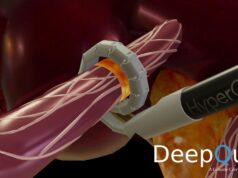 In their updated meta-analysis of 4,175 patients, Stergios Intzes together with a team from the Democritus University of Thrace, Alexandroupoli, Greece and the Heart Center, University of Leipzig, Germany, found P-wave duration (PWD) to be an independent predictor of atrial fibrillation recurrence (AFr) following catheter ablation (CA).
In their updated meta-analysis of 4,175 patients, Stergios Intzes together with a team from the Democritus University of Thrace, Alexandroupoli, Greece and the Heart Center, University of Leipzig, Germany, found P-wave duration (PWD) to be an independent predictor of atrial fibrillation recurrence (AFr) following catheter ablation (CA).
Writing in EP Europace, the authors set out their initial research aims, asserting that CA can effectively reduce AF burden and symptoms, however AFr persists as an issue. AF is the most common arrhythmia affecting more than 34 million of the global population and is set to increase in prevalence by 2050. As a rapidly growing health concern, AF is associated with high morbidity and mortality, placing subsequent strain on worldwide healthcare systems.
The authors systematically searched PubMed/Medline, Embase and ClinicalTrials.gov databases and cohort studies through Cochrane Library that reported PWD and/or morphology at baseline and AFr after CA were included. Inclusion criteria for studies were:
- Studies that included adult AF patients
- PWD was measured prior to ablation
- AFr after ablation was reported as an endpoint
- PWD was used as a variable to predict AFr
The primary endpoint was also defined by AFr during follow up. Additionally, the following keywords were used as search terms—‘P-wave’, ‘P-waves’, ‘interatrial block’, ‘interatrial conduction’, ‘AF recurrences’, ‘atrial fibrillation’, and ‘AF’ with filters ‘clinical trial’ and ‘randomised controlled trial’.
Of the initial 351 studies screened, a total of 22 were included in the subsequent analysis, all of which were single-centre cohort studies with a mean age of 61±10 years with a normal left ventricular function (LVEF 62±8%) and a left atrium of 40±5mm.
In their results, the authors found that patients with AFr had a longer PWD with a mean pooled difference of (PWD) of 7.8ms (p<0.001). Of patients measured only with an electrocardiogram (ECG) PWD remained significantly different (13 studies, PWD 7.01ms, p<0.001). Additionally, the mean PWD remained significant when analysing studies with paroxysmal atrial fibrillation (PAF) only (10 studies, PWD 6.6ms, p=0.004).
Following the identification of patients having specific PWD and AFr in each study, the researchers calculated the association between PWD and the incidence of AFr—the pooled OR was 2.4 (1.16–3.58) for PWD >120ms (13 studies, p=0.01), 2.42 (1.12–5.21) for PWD >n140ms (two studies, p=0.02), 3.97 (1.79–8.85) for aIAB (five studies, p<0.001) and 10.89 (4.53–26.15) for PWD >150ms (four studies, p<0.001). Their results reveal risk for AFr increased from >120 to >130 and >140 and initiated advanced IAB when the PWD was over >150ms.
Intzes and colleagues have positioned their study as the “largest systematic collection and quantitative synthesis” of patients undergoing AF ablation, asserting their research has “revealed the strong predictive value of different pre-procedural PWD cut-offs for the recurrence of AF after CA”. They continue: “In specific, we found that a pre-procedural PWD >120ms (pIAB) doubles the risk for AFr during follow up. When this is combined with morphologic criteria (biphasic P-wave in inferior leads), indicating an aIAB, the risk is four times higher. Most importantly though, further PWD prolongation to >15ms leads to a 10 times higher risk of recurrence.”
The authors note that identifying patients at significant risk for arrhythmia recurrence after AF ablation “remains challenging”—although predictive models have been reported, they have a “highly variable discriminatory ability (c-statistic) and do not characterise accurately the individual structural and electrical atrial remodelling”, the researchers conclude.
Intzes et al present their analysis to highlight the practical implications of PWD and IAB by describing predictive value, however they add: “In the clinical setting, there is a need for a feasible low-cost surrogate of recurrence risk that could potentially improve patient selection and translate into cost savings by avoiding unnecessary procedures.”
Having seen increasing evidence of this association in the data, the authors assert their findings may facilitate risk stratification through classifying high-risk patients (aIAB, PWD > 150 ms) and adjusting accordingly for follow up or intervention. This information is as simple to acquire as an ECG from any physician and could potentially change the management of thousands of patients with AF that are considering an ablation procedure.












